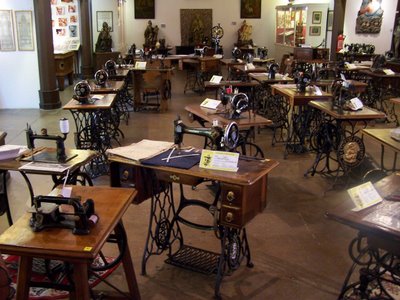The Museum at Thann
 Most every city in Alsace has a historical museum of some sort. Thann was no exception. For 2 euro you could get out of the sun and wander through the old three-story structure that serves at its museum. Following are some selected items for you.
Most every city in Alsace has a historical museum of some sort. Thann was no exception. For 2 euro you could get out of the sun and wander through the old three-story structure that serves at its museum. Following are some selected items for you.Historically, Thann has been a wine village. At one time, the most influential group in town was the wine guild, a group of select village men who looked after the business. The intro picture shows a wine guild plaque from 1618. The second name listed is a "Baltzer Weber". I doubt that he was a relative...even a distant one. The surname "Weber" seems to be as common in German speaking countries as "Smith" is in English. But it is fun to speculate.
Evidently, the wine guild kept a chronicle of each growing season and harvest. The plaque below is the record for the year 1763. The writing on it is German. The French translation told us that "1763 - Humid spring. Flooding. On the Feast of Corpus Christi, a man fell from the summit of the tower while walking across the roof. Wine was good." Somehow I suspect the fellow who fell from the tower was into the wine that day.
 (The town, like all in that time, had a protective wall around it. The tower - a look out post - remains today despite the disappearance of the town wall.)
(The town, like all in that time, had a protective wall around it. The tower - a look out post - remains today despite the disappearance of the town wall.)On the second floor was a big exhibit of sewing machines. Why? I have no idea. But it was OK. The pictures below show the exhibit and then a close-up of a model called "the Alsatia" made in Mulhouse.

 Finally, no home in the Vosges would be complete without a wood-burning ceramic stove to heat it during the winters. The model below was certainly one of the more up-scale.
Finally, no home in the Vosges would be complete without a wood-burning ceramic stove to heat it during the winters. The model below was certainly one of the more up-scale.  If you go to the pottery-making village of Soufflenheim, you can still buy these stoves. Actually, not so much to buy as to arrange to have one built into your home.
If you go to the pottery-making village of Soufflenheim, you can still buy these stoves. Actually, not so much to buy as to arrange to have one built into your home.

0 Comments:
Post a Comment
<< Home